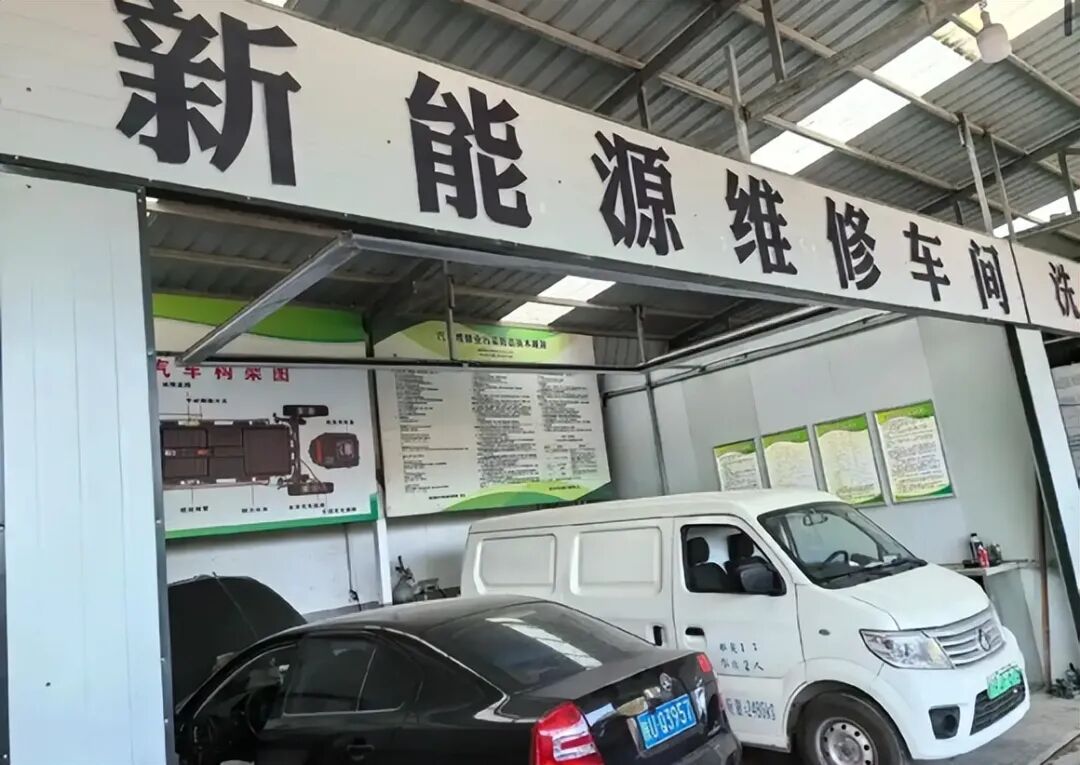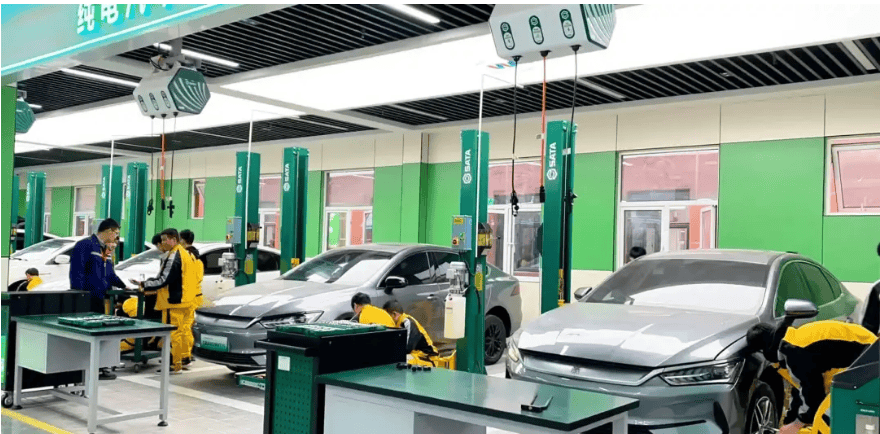In a friend’s auto repair shop filled with the aroma of tea, the comparison between an old-fashioned jack and a new energy vehicle diagnostic tool resembles the fierce clash between the traditional auto repair industry and the era of electrification. As minimalist electric vehicles glide onto the streets like sci-fi props, seasoned mechanics who have wielded wrenches for thirty years suddenly find themselves at a loss—hidden door handles lack a point of leverage, the closed front end turns the engine compartment into a “forbidden zone,” and the all-touch central control screen leaves those accustomed to mechanical buttons in a state of “finger confusion.” This technological revolution brings not only a transformation in driving experience but also a complete restructuring of the auto repair industry ecosystem.

Technological Iteration Tears Apart the Traditional Maintenance System
During the gasoline vehicle era, auto repair technicians judged engine health by the color of the oil and listened for abnormal sounds in the transmission like a doctor with a stethoscope. However, the electric vehicle’s “three electric” systems (battery, motor, and electronic control) have completely overturned the rules of the game: a certain repair shop once spent three hours diagnosing an electric vehicle’s abnormal noise, only to find it was a false fault caused by current harmonics; even more absurdly, a technician was “shocked” and left with a tingling arm after accidentally touching the high-voltage system. As 4S dealerships can clear fault codes through remote diagnostics, traditional repair shops’ lifts are gradually gathering dust.

Maintenance Frequency Plummets
Data reveals a harsh reality: gasoline vehicles average 12 visits to the shop per year for maintenance, while electric vehicles only require 2-3 visits. The reduction in the maintenance checklist is alarming for repair shops: there are no oil changes, no transmission fluid replacements, and even brake pads last several times longer due to the energy recovery system. One electric vehicle owner shared their five-year vehicle expense report: maintenance costs were less than one-third of those for gasoline vehicles during the same period, while the repair shop owner lamented a 40% drop in monthly revenue, staring at a wall full of oil filter packaging boxes.

The Skills Gap Creates Industry Differentiation
At an auto repair school in Hunan, a post-90s student named Xiao Zhang is using an oscilloscope to capture signals from the motor controller, while in the adjacent classroom, seasoned mechanics are still practicing traditional carburetor adjustments. This divide is vividly illustrated in repair shops: young technicians capable of repairing Tesla’s battery management systems earn over ten thousand a month, while older mechanics wait by dusty engine dissection tables for repair bells that will never ring again. Even more critically, 90% of traditional auto repair personnel have yet to obtain high-voltage electrician certification, which blocks them from entering the new energy repair market.
Survival Experiments Amid Transformation
Industry growing pains spark innovative ideas: a certain repair shop in Chengdu has converted half of its workstations into a new energy vehicle modification area, taking on battery protection plate installations and starry sky ceiling customization; a chain brand in Guangzhou has launched “electric vehicle custody services,” monitoring battery health through the Internet of Things; and even some seasoned mechanics have transitioned to “vehicle digital health inspectors,” specializing in vehicle system upgrades and data recovery. These attempts confirm the inevitability of industry transformation—just as mechanization replaced pure manual labor in the past, today’s wave of intelligence is also reshaping the industry’s DNA.

Standing at the entrance of the repair shop, watching as electric vehicle charging stations gradually replace gas pumps, we must admit: the technological revolution is never a gentle evolution but a disruptive iteration. As electric vehicles extend maintenance intervals to 20,000 kilometers and remote diagnostics replace on-site repairs, this industry needs not only seasoned mechanics to learn new skills but also a complete rethinking of the entire supply chain. Perhaps just as that mechanic accustomed to gasoline vehicles ultimately fell in love with the acceleration of the XPeng P7, the traditional auto repair industry will also navigate into the new electric track amid growing pains—on this road, one must have the courage to say goodbye to the smell of oil and the wisdom to embrace code.